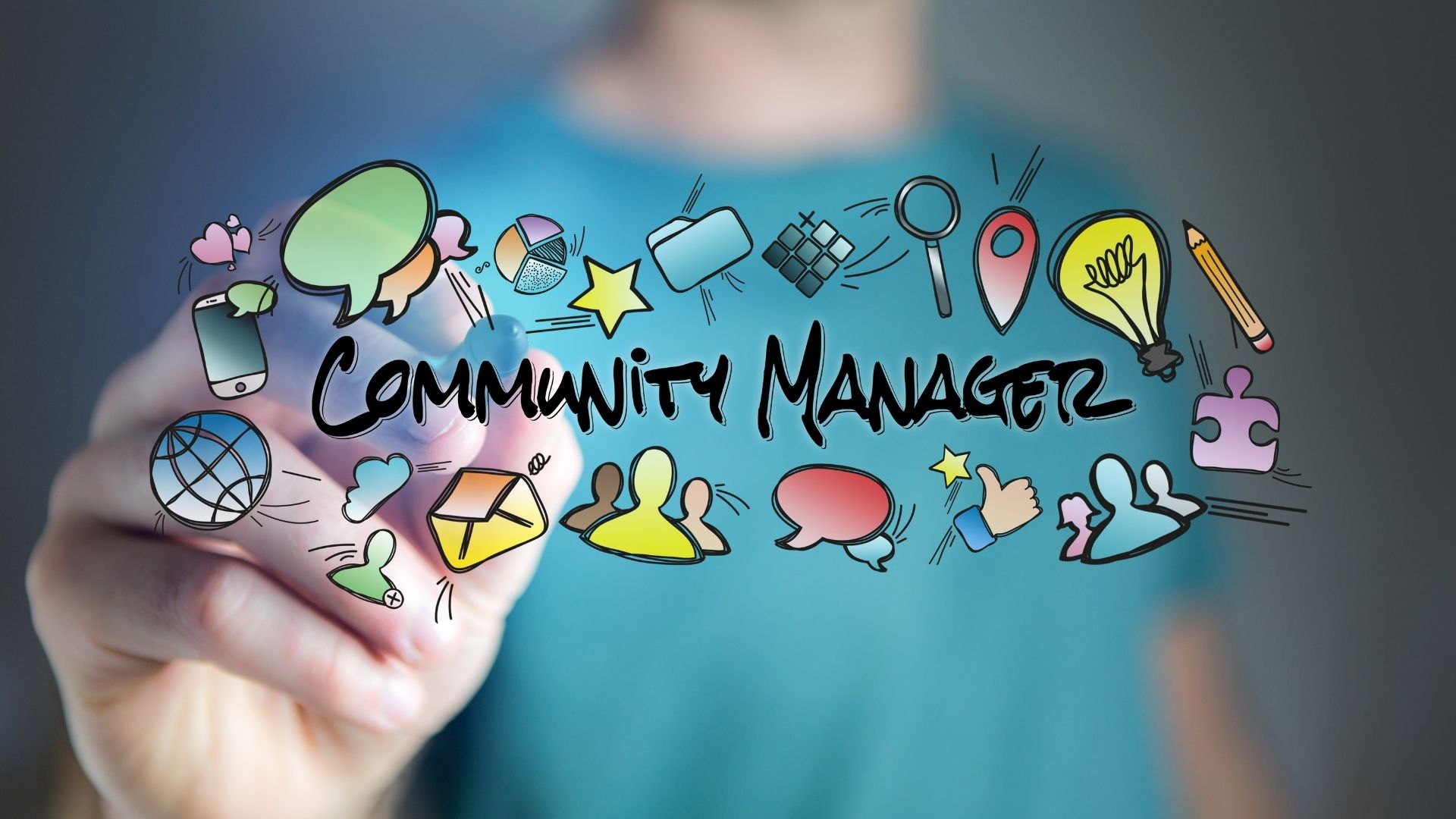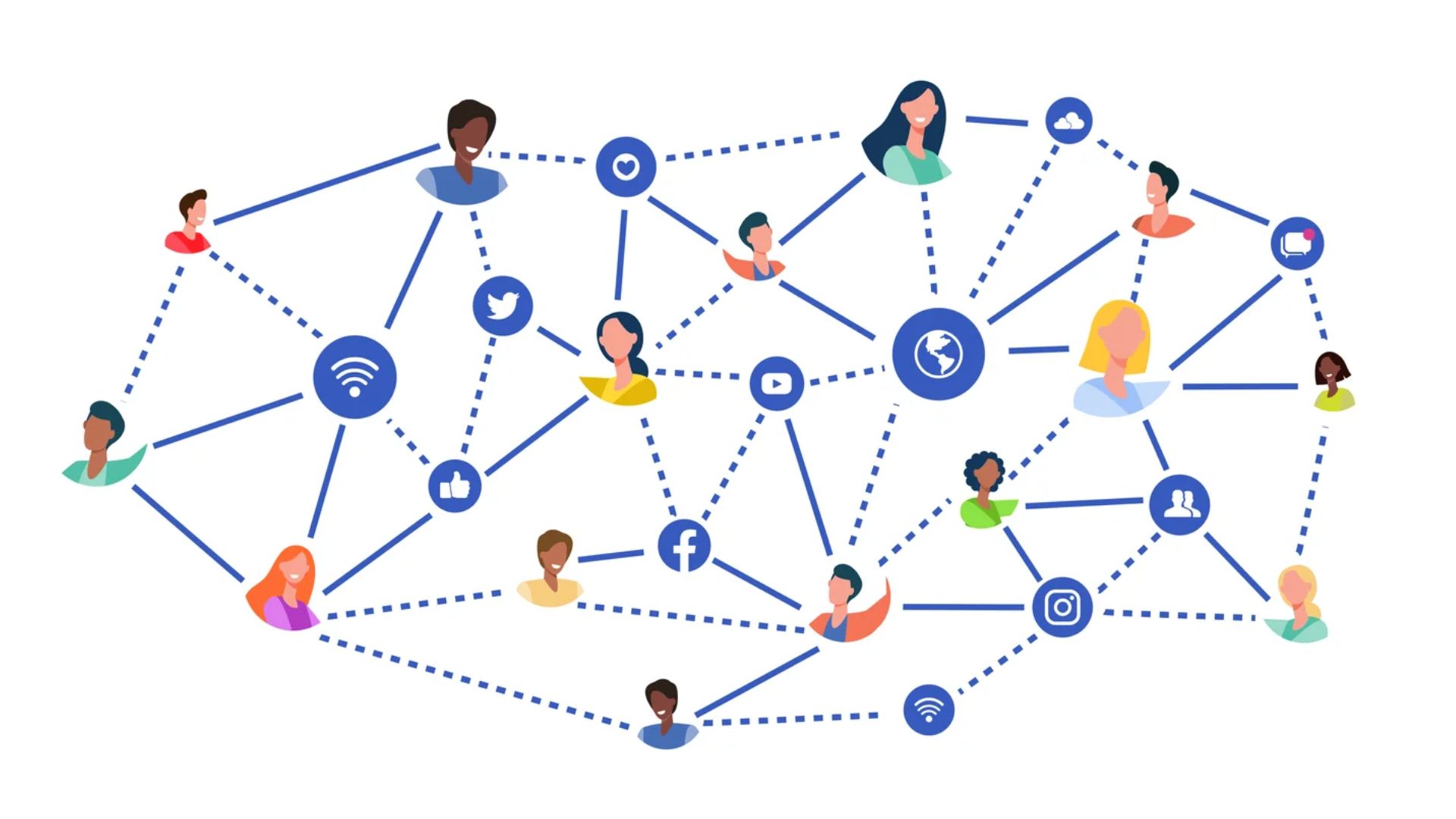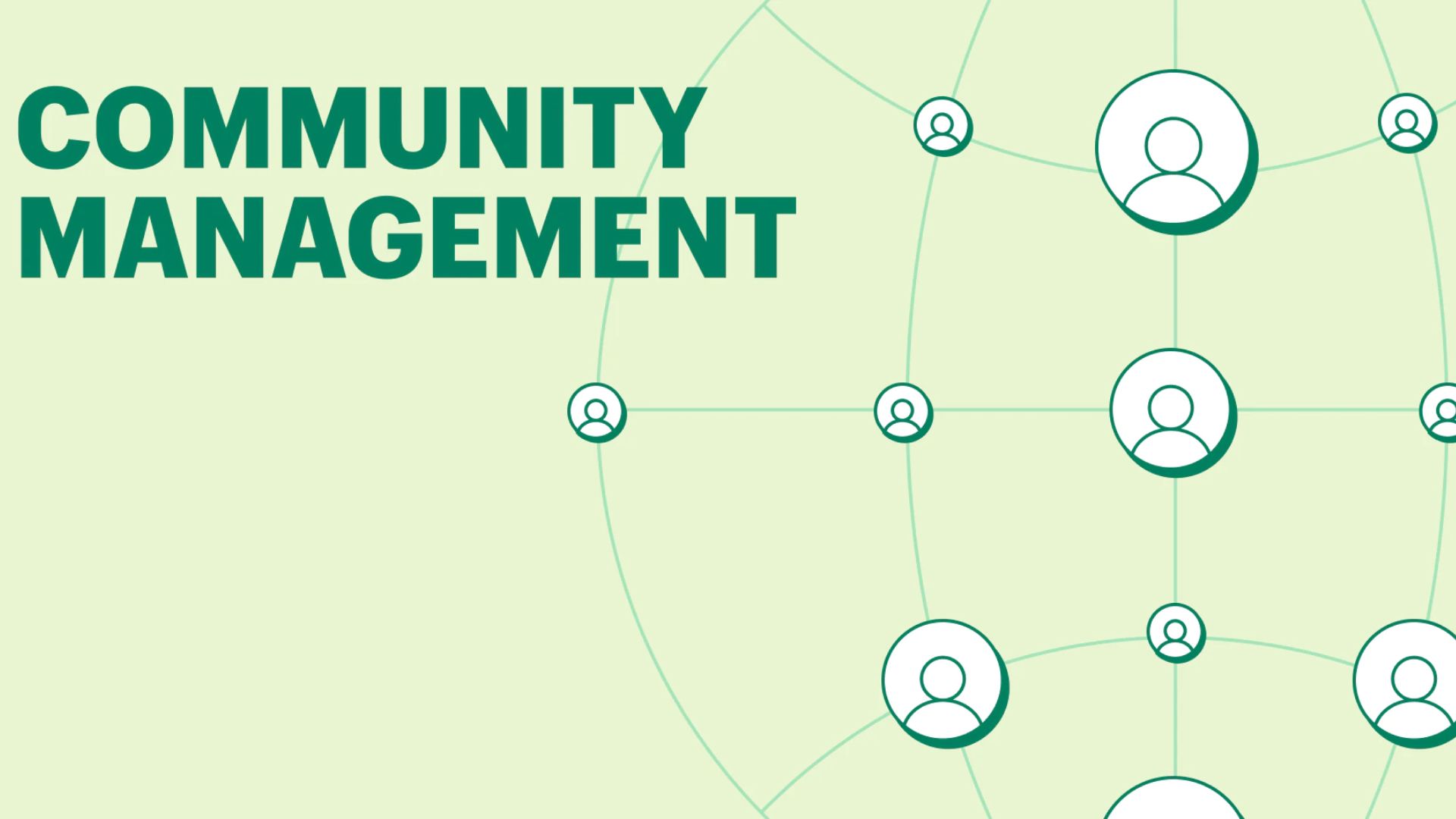
People are social creatures by nature, and they always want to interact. Globally, 33% of individuals report feeling lonely, according to Statista. Despite a more connected world, people feel more alone than ever, as evidenced by the 49% global social media usage rate.
People's relationships with businesses can contribute to their feelings of isolation, not just with strangers. Online communities can help with this. A brand or company's community can provide consumers with a feeling of community and a chance to interact with people who have similar interests and beliefs. Still, it's not a panacea for loneliness.
Community is a human need, not simply a marketing word. Community managementin digital marketingencompasses more than simply product and service sales. It's about creating a group of individuals to whom you regularly provide value, creating favorable brand awareness, and communicating that your company values both its clients and staff.
In this article, we will talk about community management, the procedures, and best practices for building and overseeing a community that engages your audience.
What Is Community Management?
Community management is the process of cultivating and managing customers who are loyal to your brand and who are patrons of your company on any number of social networks or mobile applications. The word "community" may give the impression that it refers to a specific area, but in reality, your community is dispersed over the entirety of the internet.
Additionally, a community management plan gives you the ability to engage with actual people, provide them with the information they want, develop based on the input of users, and compare and contrast experiences.
What Are The Objectives Of Community Management?
In modern times, community management has emerged as a popular businessapproach that is recognized by all types of firms, while its exact definition still needs to be discovered. How, then, is it unique? Why is this required of your company? Let's talk about the main elements that contribute to community management's significance for your brand's success.
While there are many advantages to having an online community, the following are the main justifications for creating one;
- Review and get suggestions by having honest conversations with others in your neighborhood.
- Help the audience, the supporters, and the clients.
- Boost the brand's, your domain's services, and product awareness.
- Learn about your consumers' needs and expectations to provide them with the information, services, content, and help they want and need.
- Create a platform that will let your business and clients connect through useful networks.
- Increase lifetime value, client satisfaction, and recommendations.
- Give your customers access to the benefits of a thriving community that will enhance your goods and services.
Given that various industries have varying definitions of community management, it is crucial to remember that the advantages listed above are the most significant ones that a community may assist you in achieving. Additionally, community management includes a range of techniques.
Types Of Community Management
Every community has a distinct function for a brand. One may be constructed to foster camaraderie among the people in your target cohort or to promote group problem-solving.
These are some typical kinds of communal areas that you may design for your patrons. Using the SPACE model is the most straightforward approach to go over the many categories.
The many forms of community management are represented by the SPACE Model, which helps you determine which ones are most effective for your company.
Customer Support / Success Community Management
Customer success and dinner is the first kind of community management. It frequently takes the shape of;
- A FAQ sheet
- A forum
- A neighborhood webpage
A forum is a terrific method to engage with your community, answer questions, and provide a space for users to speak and interact with one another. A forum is often a question-and-answer community discussion board. On the channel, you may also get client feedback.
You can post FAQ docs in the forum so that community members can help themselves and get rapid responses to frequently asked topics.
You may focus on helping your community members by creating a branded website or landing page for them with the aid of a customer success platform or software. Customers may use this area to contact your teams, find the resources they need (such as a knowledge base), and examine your FAQ page to assist themselves and one another.
For businesses with extensive product lines, such as software firms, this kind of community management is perfect since it allows users to exchange advice and discuss problems they may encounter.
Product Ideation, Innovation, And Feedback Community Management
A proactive and reactive kind of community management is product creativity, innovation, and feedback. In this approach, you provide a secure forum where members of your target market and consumers may provide feedback and ideas about how to innovate and enhance your goods and services.
You may arrange for user testing to be conducted, ask users to fill out questionnaires, have in-person feedback sessions, or all three. To get client input on how to improve your product or service once users experience it, you may arrange a focus group in your place of business.
All businesses may benefit from this kind of community management; getting input on innovation potential from actual users and customers is essential to success. However, it's beneficial for SaaS businesses that cater to consumers, as issues can occasionally turn into a reputation management problem.
Acquisition And Advocacy Community Management
You may engage directly with individuals who are enthusiastic about your business, such as leads, customers, brand ambassadors, and advocates, through acquisition and advocacy community management.
These participants will assist you in increasing brand recognition and promoting your goods and services via social media, affiliate marketing, and word-of-mouth. Initiating a brand ambassador program or other acquisition and advocacy campaigns is a popular strategy for building this kind of community.
By using this kind of community management, you can maintain your top brand advocates at the core of your flywheel and please them. Additionally, you'll raise awareness, encourage brand loyalty, and create enduring bonds with your staunchest advocates.
Content And Contribution Community Management
Allowing the community to submit material on any platform is an essential component of content and contribution to community management.
Allowing consumers to contribute material and feel recognized and valued can come in many forms, such as letting them write guest blog posts, create user-generated content on your behalf, or make listings on one of your websites.
Consequently, there may be a rise in client retention and loyalty. A specific staff is usually assigned to these communities to make sure all user-generated material complies with site criteria, corporate norms, and proper standards.
If you want to manage your community primarily through social media, or if you have the means to build contribution websites, you should employ a content and contribution approach.
For businesses that rely heavily on donated material for their core offerings, business strategy, or other assets, this is also a fantastic choice. For instance, businesses such as GoFundMe and Airbnb derive value from the individuals who sign up on their websites and utilize the network to exchange fundraising opportunities or vacation rentals.
Engagement (External And Internal) Community Supervision
A sort of community management known as "external engagement" gives clients and supporters a feeling of community and strengthens their bond with your brand in an environment that isn't associated with your company. Social media management is a popular kind of external involvement (more on this below).
Community management is another option for internal involvement. Businesses nowadays are realizing how important it is to build robust internal communities among partners, suppliers, workers, and vendors. It may provide a sense of inclusion, support, camaraderie, and belonging among internal contributors, as well as link them with like-minded others.
Building stronger ties inside the company can also increase staff retention, general satisfaction, and morale.
Basics Of Community Management
Understand the fundamentals of community management thoroughly before focusing on the details of your strategy;
Monitor
What is meant by "social listening"? This is essentially that. It is the process of "listening" to internet conversations. Consequently, keep an eye out for online references to your brand or product name in comments, reviews, videos, or direct tags. All of this aids in closely monitoring the impression that your audiences have of your business.
Engage
This is the point at which you take action. You reply to their remarks, strike up discussions, actively assist in resolving their grievances, and provide them with feasible next steps so they may handle things independently.
Be sure to be factual, kind, and professional you may be humorous without coming across as stuffy. Maintaining brand cleanliness in all of your client interactions should be your top priority.
Moderate
Community moderation aids in maintaining the integrity of your online brand, particularly in the event that a client expresses dissatisfaction with your goods or services in a review or remark. As soon as you learn of any such review, you should respond right away. Make a quick effort to fix the problem.
Request that the consumer provide you with the pertinent facts via email or direct message. Once you have a one-on-one interaction, utilize it to explain your stance, alleviate the customer's (justifiable) annoyance, and win them over with a substantial discount on future orders and freebies.
Measure
After you have your community management plan in place, set up your assessment tools. Once you've managed the community for a while, you'll need to start monitoring pertinent data to assess how people are seeing your business on well-known online and offline platforms. Additionally, you may actively seek out consumer feedback via surveys, polls, or direct communications.
Types Of Community Management Strategies
Build A Social Media Group
Increasing a company's social media presence is an excellent method to draw in new customers and broaden its network. Specific social networking sites allow users to organize groups, which may be helpful for businesses looking to conduct events, engage in meaningful conversations, meet new people with similar interests, and inform clients about news and updates from the firm.
To get leads, think about starting a public social media group instead of a private one. Then, when someone searches for industry buzzwords, you can use tags to make the group more accessible to locate.
You can utilize hashtags like "#developer," "#softwaredev," or "#softwaredesign," for instance, if a software development business employs you. By classifying the group with the use of hashtags, you may draw in new members. Additionally, you may utilize your social media group to respond to reviews, questions, comments, and customer service.
Employ A Community Manager
Some companies engage community managers to provide a more specialized function, while others utilize social media managers to assist in expanding their social media presence and managing content. Social media managers concentrate just on one kind of communication.
A community manager, on the other hand, focuses on facilitating connections and communication between clients, companies, and community members. Improved communication between a brand and its consumers may lead to a fruitful, long-lasting relationship, and community managers can help with that.
Typical responsibilities of a community manager consist of;
- Creating a Community Within the Company.
- Greetings to new participants.
- Organizing neighborhood events.
- Getting to know one another in the community and creating policies.
Check Direct And Indirect Feedback
Creating a community gives a company a chance to get direct input from consumers on how well it's functioning from their point of view. Customer thoughts regarding products and services are frequently included in feedback.
Examining direct feedback may assist a business in building trust with clients, pinpointing essential issues they face, and giving prospective customers clear information about corporate guidelines.
By engaging in social listening, you may also look for unintentional criticism. Finding out what customers could be thinking about your brand entails reading their posts, comments, and other interactions on social media.
A brand may demonstrate that it cares about consumer input, is actively listening, and is working on solutions by engaging in social listening. Verifying both direct and indirect input can help you make sure your company is consistently evaluating correct data.
Offer Valuable Content Online
To provide value to clients, think about offering interesting material online in addition to goods and services. Through referrals and new leads generated by content channels, digital content may boost a company's income.
Blogging, video material, live streaming, and online events are all examples of high-quality digital content. Social listening is used to ascertain the material that your target audience finds engaging.
To make sure your digital material is reliable and of the highest caliber, think about working with a content writer, video producer, or other expert in the field. You can boost client confidence in your organization by offering engaging content.
Use Metrics To Establish Goals
To assess the community's performance and set specific objectives, community administrators frequently gather data. You may use analytics to assess if you're giving your consumers the most value possible, how engaged your content is, and how invested they are in your business.
Metrics may be used to establish crucial goals, including goals for new subscribers, sales targets, or goals for content engagement. Think about employing measurements such as
Rate Of Click-Through
This indicator compares the number of individuals who read your pages or the material you're distributing to the number of people who click on links to your pages.
Suitable Leads
This is a gauge of the number of leads who have shown a desire to buy something and turn it into paying clients.
Engagement Of Customers
By comparing the overall number of website visits to the total number of hours visitors spend viewing material, clicking links, or making purchases, this indicator assesses how engaging your content is.
How Do You Build A Community Management Strategy?
Although running a community is not an easy task, with the correct plan in place, you can get through even the most difficult situations.
Be Clear On Your Goals
What constitutes a successful community management strategy? The first thing you need to do during the brainstorming stage is respond to this question. Identifying the desired result will make it much simpler to develop and implement the methods that will best help you reach your objectives.
Depending on the company and industry, success with community management might imply different things. Several such objectives are;
- Respond to consumer inquiries without resorting to formal phone calls and emails.
- Provide guidance and instruction for complex items
- Get input from clients so that you may continue to enhance your services.
- Assembling a group of former consumers who are now brand ambassadors and providing them with rewards
- Raising awareness of the brand among pertinent personas and market segments
- Boost the brand's public perception
- Encourage good word-of-mouth-a highly successful kind of advertising.
- Keep clients by curating dialogues and providing specialized services.
Make sure that everyone on your team and any relevant stakeholders is committed, on the same page, and prepared to provide the necessary funds and resources if you want to reach your goals.
Know Your Audience
To whom are you speaking? What is the central demography of your target audience? What is the most important thing to them? You'll be able to answer these queries if you have a clear understanding of your user base. Your audience shares its interests and goals, both overtly and covertly.
Understanding your audience is essential to producing branded content that connects with them and draws them to your online and physical presence. You can determine your audience's favorite online hangouts by getting to know them.
Produce Content That Matters
Refrain from following trends. Before coming up with ideas and producing content, think about what fits with your brand. Online consumers want authenticity since they are constantly exposed to sales information. The central theme of your article should be sincerity above anything else.
Communicate With Honesty And Consistency
Clients join your community with the hopes of making a genuine connection with someone. Therefore, in addition to ensuring that your messaging has a consistent voice and tone throughout all communities, be sincere and real.
Put another way, interact personally with clients, allies, and supporters. Always see every encounter from the perspective of the consumer and behave with empathy.
Consistently Provide Follow-Up Communications
Assume you responded to a consumer's complaint over a defective item they had recently received. Keep going if you pledge to provide a replacement.
Get in touch with the client to inquire about any updates. Did they get the new one, and were they happy with it? If they did, let your fans know about it via social media and other platforms. This demonstrates to other community members your concern for your clients and your willingness to go above and beyond to meet their needs.
FAQs about Community Management
What Is The Impact Of Community Management On Brand Loyalty?
Effective community management can strengthen brand loyalty by creating a positive and supportive space for users to connect with the brand.
How Do Community Managers Measure The Success Of Their Efforts?
Metrics like engagement levels, member growth, and sentiment analysis are commonly used to evaluate the impact and effectiveness of community management strategies.
What Challenges Do Community Managers Often Face?
Challenges include handling negative interactions, maintaining a balance between freedom of expression and community guidelines, and adapting to evolving community dynamics.
Conclusion
Despite being relatively new, community management has the potential to boost the company significantly. You can provide a safe and secure environment for your customers, followers, employees, and supporters to interact, exchange ideas, and grow from one another by developing a community management plan for your company.
This will increase conversions, attract new customers, and strengthen brand loyalty by giving your business a relatable human touch. The clients that have the most impact on your success.
Thus, begin by assessing the many business objectives that your organization has and how community management might assist in accomplishing them. After completing that, you'll be in a better position to determine if hiring a community manager is necessary.






